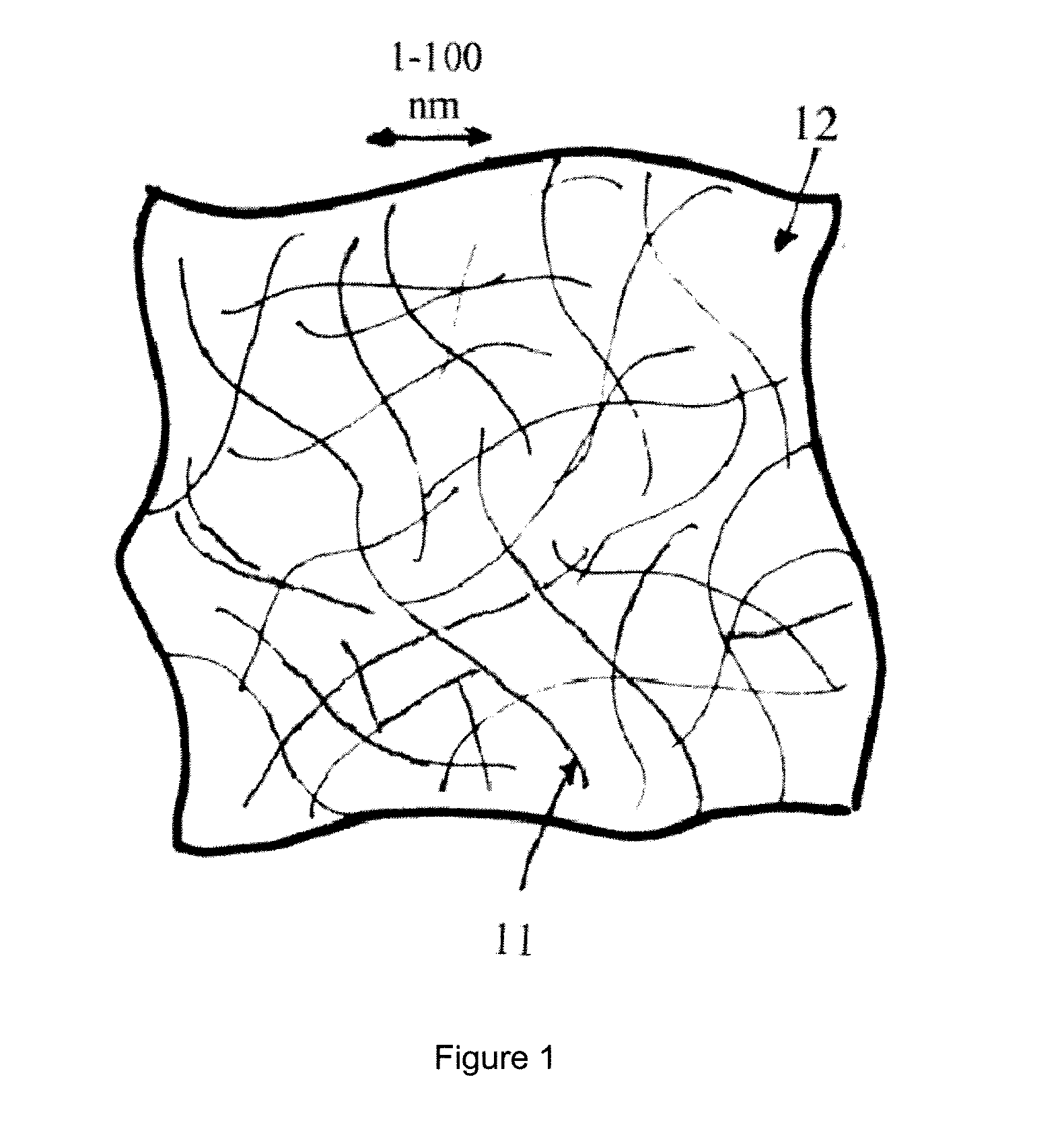Electrode material, lithium-ion battery and method thereof
a lithium-ion battery and electrode material technology, applied in the direction of electric vehicles, cell components, transportation and packaging, etc., can solve the problems of low reversible capacity (220 mahgsup>1/sup>) and irreversible capacity (511 mahgsup>1/sup>) of hard carbon
- Summary
- Abstract
- Description
- Claims
- Application Information
AI Technical Summary
Benefits of technology
Problems solved by technology
Method used
Image
Examples
example 1
Preparation of Electrode Material by Liquid-Phase Process
[0048]Two different processing routes were used to synthesize the anode material in Examples 1 and 2. Example 1 was a liquid phase process, and that in Example 2 was a solid-state process. In both processes, the graphene oxide was fabricated by a usual method disclosed in W. Hummers, J. AM. CHEM. SOC., Vol. 80 [6] (1958), which is incorporated herein by reference in its entirety.
[0049]The graphene oxide was mixed with a liquid phase TTCS and a peroxide catalyst such as dicumyl peroxide, in a weight ratio of graphene oxide:precursor:catalyst=5˜50: 95˜50: 1˜5 with 1˜5% peroxide catalyst. The mixture was then kept in ultra-sonic bath followed by high speed shear homogenizer to produce good dispersion. After the dispersion process, the liquid suspension was crosslinked in an argon purged vertical tube furnace for about 1 to 5 hours at a temperature from 200° C. to 400° C. Then, it was pyrolyzed at a higher temperature in the argon...
example 2
Preparation of Electrode Material by Solid-State Process
[0050]The graphene oxide was mixed with a crosslinked polymer powder, which was made from TTCS and peroxide catalyst in a weight ratio of graphene oxide: crosslinked polymer powder of from about 5:95 to about 50:50. Crosslinking process was performed in the argon purged vertical tube furnace from 200° C. to 400° C.
[0051]Then the mixture was ground in an attrition mill for about 5 to 20 hours with a liquid medium such as acetone or methyl alcohol to dissipate the heat and avoid burning. The attrition milling was performed using zirconia balls. Subsequently, the milled powder in the liquid medium was dried in the convection oven for about 1 to 10 hours followed by pyrolysis at an elevated temperature in the argon purged furnace for about 3 to 10 hours. The pyrolysis temperature range was from about 700° C. to 1000° C.
example 3
[0052]GO-NC-Anodes were prepared using two methods. Some anodes were prepared using mixtures comprising by weight 80% active material for Example 1 or Example 2, 10% Acetylene Black, and 10% polyvinylidene fluoride (PVDF) as a slurry in 1-methyl-2-pyrrolidinone. Some anodes were prepared using mixtures comprising by weight 90% active material and 10% PVDF as a slurry in 1-methyl-2-pyrrolidinone. Then the mixtures were spreaded onto copper foil using the screen printing method with a 5 mil applicator. As will be evidenced in Examples 5-9, both methods have produced similar properties in the anodes. Without the intention to be bound by any particular theory, it is envisioned that both methods have produced a nanocomposite structure of GO-NC-Anodes as schematically shown in FIG. 1. With reference to FIG. 1, graphene-oxide sheets 11 are distributed in a polymer-derived matrix 12 made from SiCxNyOzHm, wherein x=0.7-2, y=0-0.8, z=0-0.85, and m=0-5.
[0053]A half-cell ...
PUM
| Property | Measurement | Unit |
|---|---|---|
| temperatures | aaaaa | aaaaa |
| discharge time | aaaaa | aaaaa |
| discharge time | aaaaa | aaaaa |
Abstract
Description
Claims
Application Information
 Login to View More
Login to View More - R&D
- Intellectual Property
- Life Sciences
- Materials
- Tech Scout
- Unparalleled Data Quality
- Higher Quality Content
- 60% Fewer Hallucinations
Browse by: Latest US Patents, China's latest patents, Technical Efficacy Thesaurus, Application Domain, Technology Topic, Popular Technical Reports.
© 2025 PatSnap. All rights reserved.Legal|Privacy policy|Modern Slavery Act Transparency Statement|Sitemap|About US| Contact US: help@patsnap.com



